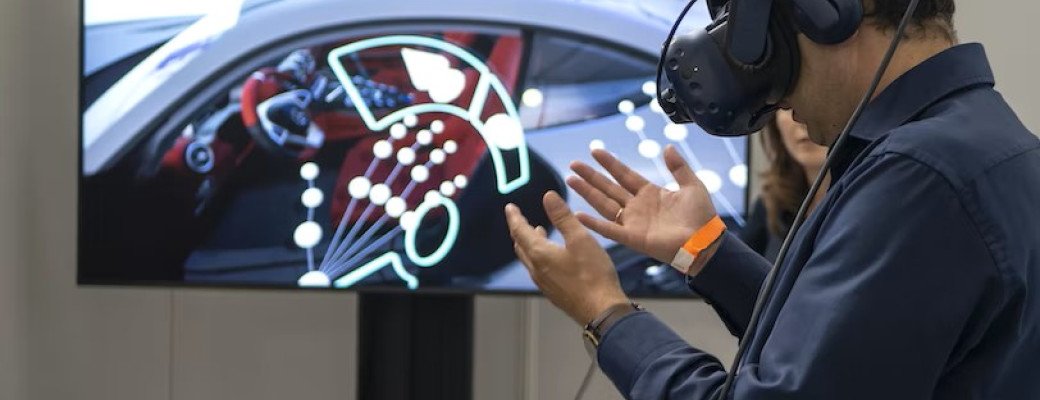
Haptic advertising is a form of advertising in which marketers use the sense of touch to engage and influence consumers. Haptic technology has become increasingly sophisticated in recent years. It is now possible for businesses to create highly immersive and interactive experiences using touch. Just think of companies like Game Mania where you can briefly play and experience a game before purchasing it. At Mediamarkt, you can also connect to bluetooth speakers before the purchase to test the audio quality.
“Due to its graphic representation and sensual immediacy, haptic advertising corresponds very well with the structure of our way of thinking. Haptics is an extraordinarily important communication channel.“ - Quote from researcher & psychologist Dr. Markus Kieffer.
It is important that the message of the brand and the promotional item, which you use for haptic advertising, match. This plays an extra important role with a strong brand, where you can sell based on your image. With weaker brand recognition, where sales are primarily based on a lower price, this has less of an impact. So make sure the message you want to convey as a brand matches the promotional item. As a seller of luxury products, you are not going to buy a budget ballpoint pen.
The success of promotional products depends on a few factors:
Tip: Want to learn more about promotional products? Then check out our article on the power of promotional products.
Haptic advertising is not a new phenomenon; we have been exposed to it for decades. Just think of the printed magazines you read, the active TVs in electrical stores or the various garments you touch during a day of shopping. With the rise of e-commerce, this has completely changed and offline marketing has been partially neglected by many marketers. We now order the product, before we have physically seen or touched it. Only when the purchased item arrives, can we physically observe and touch it for the first time.
We previously discussed the influence of our brains & colors on purchasing decisions. But the brain, according to adherents of embodied cognition theory, is not the only organ that can influence our purchasing behavior. We forget about our largest organ: the skin. The skin is responsible for our sense of touch; it allows us to sense pain, texture and temperature through sensory receptors. According to the theory of embodied cognition, the way we acquire and transmit knowledge is regulated not only by our brains, but also by direct physical experiences & interactions, such as touch. Simply put, according to this theory, this means that you don't only think with your brain, but also with your body. Haptic advertising takes advantage of these physical touches.
A 2015 study from the United Kingdom, on the effect of touch when advertising in print media and on a tablet, provides us with useful statistics on haptic advertising. For example, the study states that the touch factor plays a major role for potential customers. The touch factor in print media gives subjects a greater sense of trustworthiness, satisfaction and persuasion. These feelings encourage customers more quickly to make a positive purchase decision and may even lead to referrals for acquaintances. The promotional's sense of honesty & sincerity increased by 41%, according to this study. The quality perception of the product also increases by 20%. Finally, the customer's purchase intention increases by 24%.
It turns out that touching an object leads to a greater connection and can lead to a faster purchase. Customers, who touch the object, are willing to pay more for the product, than those who do not touch it. From the moment they have touched or held a product, a relationship with the object has been built and they feel more of an ownership to that product. This phenomenon is the endowment or ownership effect. To illustrate this, you can imagine your regular place at the office or your regular table at your favorite restaurant. You feel a sense of ownership over this particular spot, even when there is no possibility of real ownership.
This endowment effect is caused by 4 things:
Companies, like Zalando, have been creating a "fitting room" experience for years. With the option to return products for free, customers feel like they are in a fitting room at home where they can try out the items or just put them back/return them when they don't want to buy them.
Another example is that when shipping orders, companies use heavier paper to create the illusion that the quality of the products included is also higher. This is a psychological trick where, in a certain context, people associate heavier products with quality and lighter products with inferiority. This same phenomenon, also applies to ballpoint pens; heavier ballpoint pens are also more likely to be assumed to be luxury ballpoint pens.
A product can evoke different emotions based on its shape. A rectangular shape exudes more power & dominance, while a rounder shape creates a more cheerful & optimistic feeling. It is also used to make a promotional more recognizable by using a special texture of packaging. This leads to better brand recognition.
Tech companies are using VR haptics gloves. These mechanical gloves have sensors to track the user's hand movements. The user can then sense vibration, heat and electrical impulses. This allows them to test & feel all kinds of products in a virtual world. It is also used for tours and concerts.
In short, haptic advertising can be a powerful tool for marketers to create a unique and engaging brand experience that stands out in the minds of consumers and produces positive (business) results. If more people will invest in the future of haptic advertising, it could be a real revolution for advertisers.
Tip: Are you looking for promotional items for haptic advertising? Then be sure to take a look at what we offer.